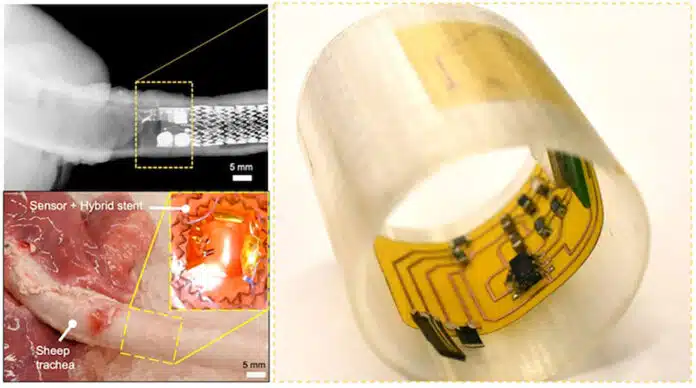
By Ashwini Sakharkar 9 Nov, 2024
Collected at: https://www.techexplorist.com/artificial-cilia-monitor-internal-biomarkers-detect-airway-diseases/92100/
Xiaoguang Dong, an innovative assistant professor of mechanical engineering from Vanderbilt University, is leading a research team that has developed a system of artificial cilia. This technology is set to revolutionize the way we monitor mucus conditions in the human airways, providing crucial insights for the early detection of infections, airway obstructions, and the progression of serious diseases such as Cystic Fibrosis (CF), Chronic Obstructive Pulmonary Diseases (COPD), and lung cancer.
In their publication, the researchers emphasized that continuous monitoring of airway conditions is vital for timely medical interventions, especially following the implantation of airway stents that help relieve central airway obstruction in lung cancer patients. Specifically, mucus conditions serve as critical biomarkers indicating inflammation and stent efficiency, yet monitoring these conditions has proven challenging.
Existing techniques, such as computed tomography imaging and bronchoscopy, come with notable risks like radiation exposure and lack the capability to offer continuous, real-time feedback outside of clinical settings. By emulating the natural sensing mechanisms of biological cilia, Dong and his team have unveiled an extraordinary new technology to accurately identify mucus conditions, such as viscosity and layer thickness, which are vital biomarkers for assessing the severity of diseases.
“The sensing mechanism for mucus viscosity leverages external magnetic fields to actuate a magnetic artificial cilium and sense its shape using a flexible strain gauge,” the researchers wrote. “Additionally, we report an artificial cilium with capacitance sensing for mucus layer thickness, offering unique self-calibration, adjustable sensitivity, and range, all enabled by external magnetic fields generated by a wearable magnetic actuation system.”
The researchers evaluated the method by using the sensors either separately or together with an airway stent inside an artificial trachea and sheep trachea. The sensing signals are transmitted wirelessly to a smartphone or cloud for additional data analysis and diagnosis of diseases.
“The proposed sensing mechanisms and devices pave the way for real-time monitoring of mucus conditions, facilitating early disease detection and providing stent patency alerts, thereby allowing timely interventions and personalized care,” according to the study.
This research was conducted in collaboration with faculty members from Vanderbilt University Medical Center: Fabien Maldonado, a professor of medicine and thoracic surgery; Caitlin Demarest, an assistant professor of thoracic surgery; and Caglar Oskay, the chair of the Department of Civil and Environmental Engineering as well as the Cornelius Vanderbilt Professor of Engineering. Yusheng Wang, the primary author of the study, is a third-year Ph.D. student in the Department of Mechanical Engineering.
Journal reference:
- Yusheng Wang, Carlos Negron, Alend Khoshnaw, Steven Edwards, Hieu Vu, Joseph Quatela, Nathan Park, Fabien Maldonado, Caitlin Demarest, Victoria Simon, Caglar Oskay, and Xiaoguang Dong. Sensory artificial cilia for in situ monitoring of airway physiological properties. Proceedings of the National Academy of Sciences, 2024; DOI: 10.1073/pnas.2412086121

Leave a Reply